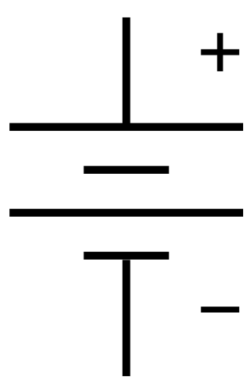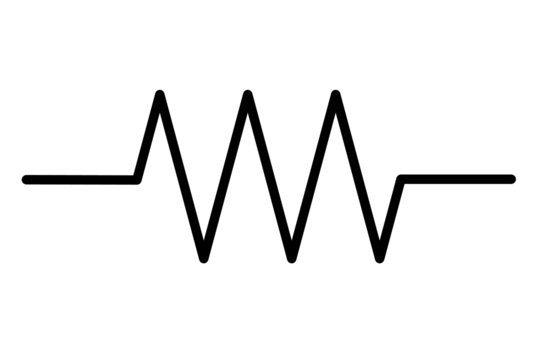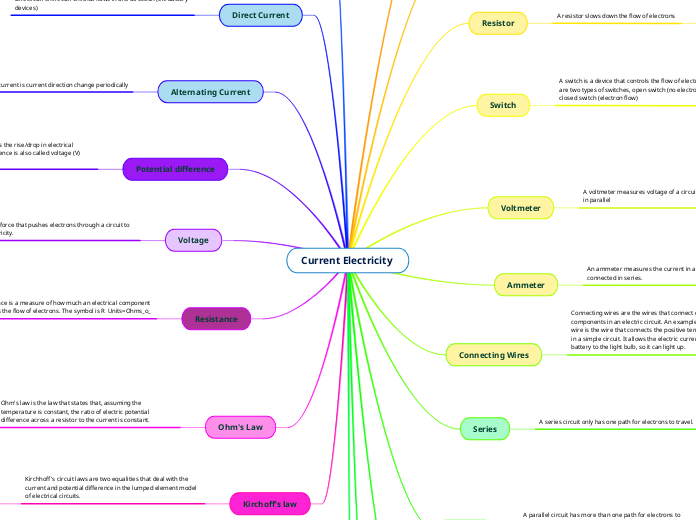Current Electricity
Current
Current is a measure of electrons/charge that passes a given point in a circuit each second. Current is a measure of charge (I) Units= Amps (A)
Direct Current
Direct current is current that flows in one direction (ex. battery devices)
Alternating Current
Alternating current is current direction change periodically
For example, normal household electricity that comes from a wall outlet.
Potential difference
Potential difference measures the rise/drop in electrical potential. The potential difference is also called voltage (V) Units=Volts(V)
Voltage
Voltage is the force that pushes electrons through a circuit to produce electricity.
For example, voltage can be stored in a battery. If the battery is connected to a wire, its voltage can push electrons through the wire. And if, say, an LED bulb is connected to that wire, the electrons can flow through the bulb to light it up.
Resistance
Resistance is a measure of how much an electrical component opposes the flow of electrons. The symbol is R Units=Ohms_o_
For example, current must struggle to flow through the small coils of a toaster, enough to generate heat that browns bread. Old-style incandescent light bulbs force current to flow through filaments so thin that light is generated.
Ohm's Law
Ohm's law is the law that states that, assuming the temperature is constant, the ratio of electric potential difference across a resistor to the current is constant.
Kirchoff’s law
Kirchhoff's circuit laws are two equalities that deal with the current and potential difference in the lumped element model of electrical circuits.
Subtopic
Battery
The battery is the power source, electrons leave the battery from the negative terminal + returning to the positive terminal.

Load
A load is a type of resistor/device that converts electrical energy in heat, motion, sound or light.
Resistor
A resistor slows down the flow of electrons

Switch
A switch is a device that controls the flow of electrons. There are two types of switches, open switch (no electron flow) or a closed switch (electron flow)
Voltmeter
A voltmeter measures voltage of a circuit *must be connected in parallel
Ammeter
An ammeter measures the current in a circuit. An ammeter is connected in series.

Connecting Wires
Connecting wires are the wires that connect different components in an electric circuit. An example of a connecting wire is the wire that connects the positive terminal of a battery in a simple circuit. It allows the electric current to flow from the battery to the light bulb, so it can light up.
Series
A series circuit only has one path for electrons to travel.
Ex. if one light goes out, they all go out.
Parallel
A parallel circuit has more than one path for electrons to travel.
For example, electrical outlets
Open Circuit
In a open circuit the pathway is incomplete, electrons do not flow and the circuit does not work.
For example, when you turn a light bulb off
Short Circuit
A short circuit is the circuit that's path is interrupted + the lad is bypassed; this is very dangerous, the wires/source can overheat/catch fire/trip a beaker (safe)
For example, a circuit powering a light bulb with a battery.
Circuits
An electrical circuit is a path for electrons to flow. There are two types of circuits Series and Parallel.
